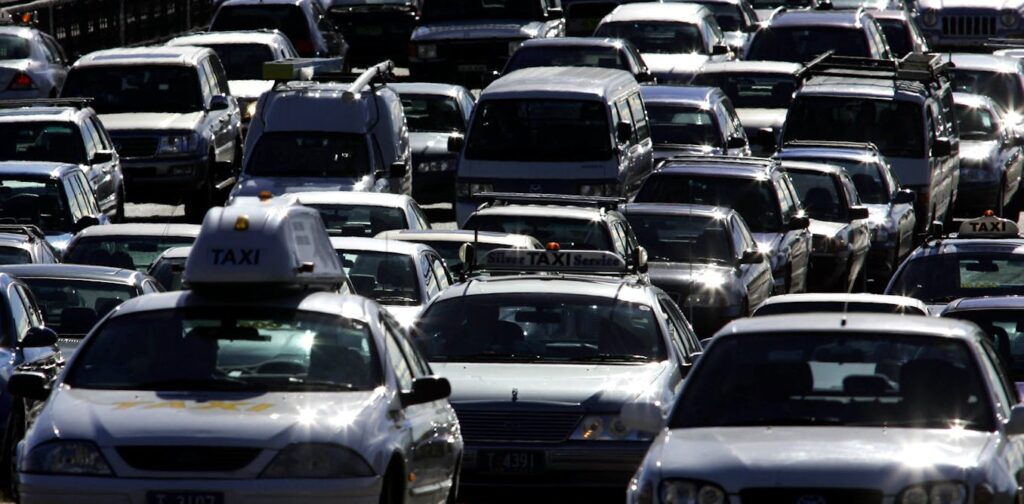
A new road charge is looming for electric vehicle drivers in Australia, as Treasurer Jim Chalmers reportedly accelerates the policy as part of a broader tax-reform push. At a forum in Sydney this week, state and federal Treasury officials are meeting with industry figures to progress the design of the policy ahead of next week’s economic reform summit.
The proposed charge has sparked debate, with proponents arguing that drivers of electric and hybrid vehicles do not “pay their way” due to their exemption from the fuel excise tax. This perspective is based on the belief that fuel taxes are meant to cover the costs of road construction and maintenance. However, this assumption is economically flawed.
The Purpose of Fuel Excise
In Australia, the fuel excise is approximately 51 cents per litre and is included in the cost of fuel at the pump. Contrary to popular belief, revenue from this excise does not directly fund road infrastructure but is instead funneled into the federal government’s general revenue. The primary function of the fuel tax is to charge motorists for the pollution their vehicles produce.
The fuel excise is about 51 cents per litre, intended as a charge for vehicle pollution.
Internal combustion engine vehicles, running on petrol or diesel, generate several types of pollution, including carbon dioxide emissions that contribute to climate change, local air pollution from particulates, and noise pollution. These are classified as “negative externalities” in economic terms, where the costs of pollution are not borne by the polluter.
Assessing the Costs of Pollution
Estimating the societal costs imposed by polluting vehicles varies, but they are likely as large as or larger than the revenue generated from fuel excise. For instance, a litre of petrol, when burned, produces 2.3 kg of CO₂, due to the carbon combining with oxygen atoms during combustion.
CO₂ emissions from burning petrol cost about 67 cents per litre, surpassing the current excise of 51 cents per litre.
The U.S. Environmental Protection Agency previously estimated the social cost of carbon dioxide emissions at about US$190 (A$292) per metric tonne. Even with a conservative estimate of US$80 per metric tonne, the costs of CO₂ emissions remain significant.
Health Impacts of Vehicle Emissions
Motor vehicles are a major source of air pollution, linked to diseases such as coronary heart disease, COPD, stroke, type 2 diabetes, lung cancer, and lower respiratory infections. In Australia, air pollution-related deaths are estimated to range from 3,200 to over 4,200 annually, exceeding the number of fatalities from car crashes.
Vehicle emissions may be responsible for over 11,000 premature deaths in adults in Australia each year.
Assigning a monetary value to life and health is challenging yet essential for policy-making. The Australian government values a statistical life at $5.7 million, suggesting that saving 2,000 lives annually could yield benefits exceeding $10 billion, more than half the revenue from fuel excise.
Rethinking Road Funding
Given the harms caused by traditional vehicles, the reduction in fuel excise revenue due to the shift to electric vehicles should be welcomed, akin to declining cigarette tax revenues. The question then arises: who pays for roads?
Road costs extend beyond construction and maintenance, involving significant capital and land investment with minimal public return. Vehicle registration fees contribute modestly, underscoring the need for a road-user charge applicable to all motorists. Such a system is set to be introduced in Aotearoa New Zealand.
The payment should be based on vehicle mass and distance travelled, as heavy vehicles cause most road damage.
Australia’s transition to electric vehicles is progressing slowly. A road user charge targeting only electric and hybrid vehicles could hinder this transition further, representing a policy misstep.
As Australia considers these changes, the broader implications for environmental policy, economic equity, and infrastructure funding remain critical areas for discussion. The upcoming economic reform summit will likely shed more light on the future of road funding and the role of electric vehicles in Australia’s transport landscape.






